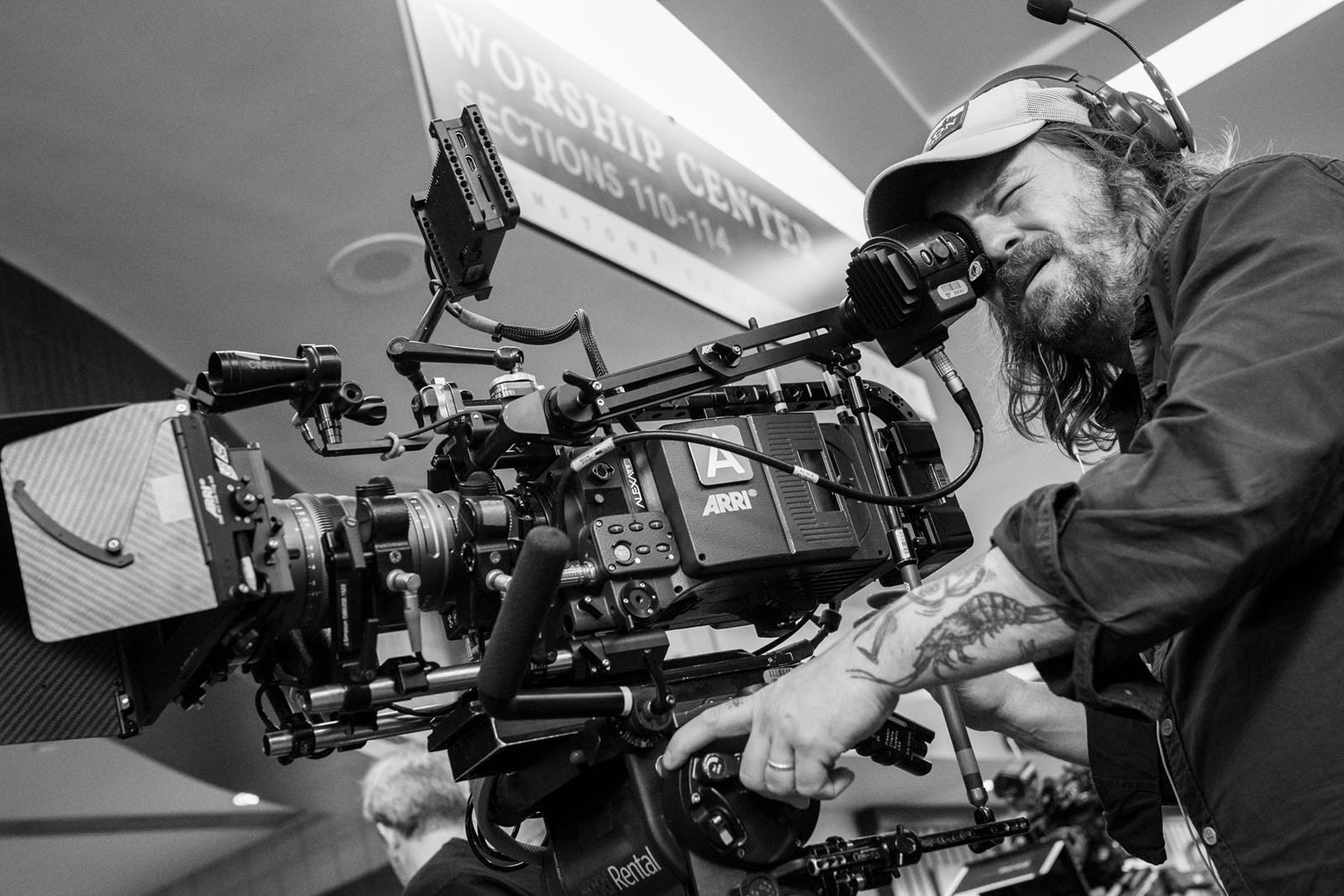
Cinematographer Michael Simmonds (BFA 2000 Film and Video) on the set of the HBO series The Righteous Gemstones.
Pick any profession within the film and television worlds—and there seem to be an ever-growing number of them—and odds are you can find an SVA alumnus to claim it. These graduates have a range of backgrounds, too: Many may have completed one of the College’s film programs, but others might have come from cartooning or fine arts or photography.
What draws such diverse creative talents to the entertainment business? What do people in these different careers actually do? How have they carved out a place in a notoriously competitive and unpredictable industry?
In the fall/winter 2021 Visual Arts Journal, several alumni working in the film and television industry roles talk about their professional lives and the ingenuity, compromises and daily labors that go into creating movies and series in the 21st century. One such alumnus is Michael Simmonds (BFA 2000 Film and Video), director of photography on more than 40 films and television shows, including Halloween (2018), The Last O.G. (2018 – ), Halloween Kills (2021) and The Righteous Gemstones (2019 – ), whose second season premiered earlier this month. Scroll on to read Simmonds’s account of a day in the life of a cinematographer, and to read the full article, click here.
A cinematographer is like a photographer, but for movies; they’re responsible for the framing and lighting of every shot of every scene.
Your average feature-film shoot day never really starts or ends but is a continuation of the previous day, with a few night terrors linking the two. I usually show up on set 45 minutes before my call time—30 minutes early is industry standard. If you showed up “at call,” people would think poorly of you.
Each day starts with a breakfast burrito and coffee. Burritos are key: They don’t require utensils or even a seat. Breakfast on a set is pretty awesome, but the cinematographer rarely spends time at the buffet or food truck. Productions go above and beyond to bring things to me to ensure my focus stays on the photography and schedule. Even my bathroom visits are mentioned on the P.A.’s radio.
Every morning, the first assistant director [A.D.] and I debate the shooting order for the day. But the biggest creative decision I’ll make is where to park the production trucks. You never want to move the trucks.
The first shot of the day gets an absurd amount of attention. Paintings on the walls or cars on the street get slightly moved, and people point out things like “plants growing out of people’s heads,” because a leaf in the background briefly lines up with an actor’s head during a wide shot. There is no fighting this phenomenon aside from an experienced director, and even they tend to obsess. It’s best to let everyone get this out of their system; in a few hours, nobody will give a shit about any of it.
At lunch, the director, A.D. and I discuss a strategy for the afternoon work and whatever’s leftover from the morning. Usually, it’s “Mike needs to work faster” and “Let’s use our two cameras to shoot different scenes at the same time.” It’s the A.D. and the director against me, so I say, “Great idea,” and go tell my crew—the lighting, grip and camera team, which can be up to 50 people—that we’ll be splitting up. They never like this. What’s worse is that when they execute this plan effectively, it means it’ll be asked of them again, and they know it.
You often double the amount of setups in the afternoon. As long as the performance and focus are good, you move on—no more fidgeting with “trees growing out of an actor’s head.” I believe that shot selection and acting are what’s critical to a scene being good and everything else is nonessential, and the after-lunch work is a testament to that. By the end of the day, my job is managerial: I jump between two cameras, which are pointing in completely different directions.
When the day is over, I go back to my Airbnb and have a few beers as I skim through the dailies. I’ve been shooting movies for close to 20 years and I will forever be shocked that none of the on-set dramas are present in the images. The audience cannot see that sliver of a flag I couldn’t get out of the edge of the frame, or that the sun is rising behind the camera during a night scene. A scene that took six hours to shoot is no better than one that took 90 minutes.
A version of this interview appears in the fall/winter 2021 Visual Arts Journal.


